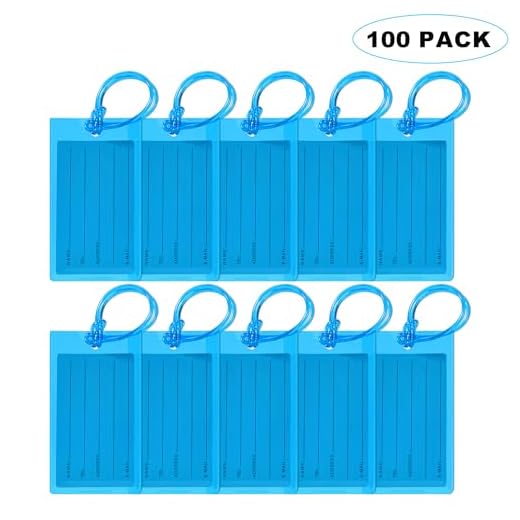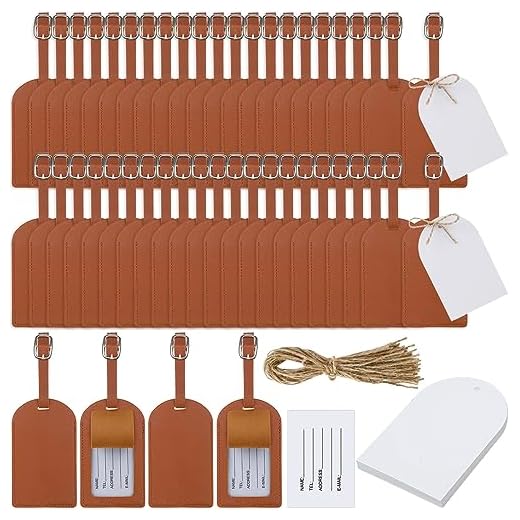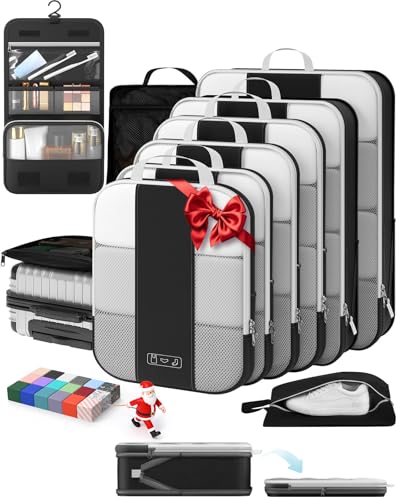







Using sturdy materials like leather or durable plastic is the first step towards crafting an effective identification device for your belongings. Choose high-quality materials that can withstand wear and tear during transit.
Next, design a layout that is both functional and aesthetically pleasing. Include essential information such as your name, contact number, and address. A minimalist approach ensures that the details remain clear and easy to read, even from a distance.
Consider adding a personal touch with colors or patterns that reflect your style. This not only adds character but also makes your bag easily recognizable in a sea of similar items. A bright color can help prevent mix-ups at baggage claim.
Finally, attach the identification device securely to your bag. Look for robust fasteners or straps that can endure the rigors of handling by airport staff. Ensure that it is easily accessible, yet securely fastened to avoid accidental loss.
Creating an Identification Label for Your Bags
Choose a material that is durable and water-resistant, such as plastic or synthetic leather, to protect your identification piece from wear and tear during transit.
Gather materials:
- Sturdy cardstock or pre-cut tag blanks
- Waterproof markers or permanent pens
- Fabric or metal strap for attachment
- Protective lamination sheets (optional)
Design your card with the following details:
- Your full name
- Contact number
- Alternate contact (a friend or family member)
- Your email address
Utilize bold, clear text for readability. Avoid small fonts or intricate designs that may obscure the information.
Once your design is complete, consider laminating the card for enhanced durability. Cut it to the desired size, typically around 2 inches by 3.5 inches.
Attach the strap securely to your bag. Metal straps tend to last longer than plastic, providing better security during transit.
For added flair, decorate with stickers, washi tape, or personal art. Ensure that any embellishments do not obstruct the crucial information.
Test the attachment by giving it a gentle tug; it should remain firmly in place without slipping off.
Selecting Materials for Your Identifier
Choose durable materials like leather, plastic, or silicone that can withstand wear and tear. Leather offers a classic appearance, while plastic is lightweight and often waterproof. Silicone provides flexibility and comes in various colors, making it easy to spot.
Consider thickness when selecting your medium; thicker options resist bending and tearing. Ensure any attachment points, such as loops or holes, are reinforced for additional strength. Look for weather-resistant features if exposure to moisture is likely.
For personalization, select materials that allow for easy engraving or printing. Some synthetic fabrics accept ink better than others, ensuring your details remain legible over time.
Eco-friendly materials, such as recycled plastics or organic cotton, cater to sustainability preferences. These choices reduce environmental impact while still delivering on functionality.
Test the feel and weight of the materials before finalizing your selection. A lightweight, yet strong option enhances usability during travels, contributing to your overall experience.
Step-by-Step Guide to Designing Your Identifier
Begin with choosing a color scheme that resonates with your personal style. Bright colors enhance visibility while darker shades offer a sleek appearance. Use contrasting hues for text to ensure legibility.
Layout Blueprint
Sketch the arrangement of information. Essential details usually include your name, contact number, and email. Consider placing them centrally for easy access. Add icons or graphics that reflect your personality, such as travel-related images, to make it visually appealing.
Font Selection
Opt for clear, bold fonts that maintain readability at a distance. Sans-serif types are often preferred for modern looks. Ensure that your text size is adequate to be read easily by anyone handling your belongings.
For waterproofing and durability, incorporate laminating techniques. A sturdy finish will protect against wear during transit. If you’re looking for cleaning tools to maintain the appearance of your identifiers, check out the best pressure washer for cleaning windows.
Finalize your design by printing a mockup. Test it on various materials to determine the best fit. Adjust as necessary before the final production.
Adding Contact Information Creatively
Incorporate your details with flair using bold fonts or vibrant colors that match your personal style. Instead of plain text, use playful icons, like a small airplane or suitcase, next to your phone number or email address.
Designing with Shapes
Explore unique shapes such as circles or stars for displaying contact information. Round corners or playful outlines can transform the presentation, making it visually appealing.
Interactive Elements
Consider adding QR codes that link to a digital business card or contact form. This adds a modern touch and gives the recipient a quick way to save your information.
Emphasize readability by choosing contrasting colors for text and background. For example, white text on a dark background ensures easy visibility. For inspiration, visit best luggage deals toronto for materials that enhance creativity in your design.
Use a playful font or handwritten style for a personal touch, but ensure it remains legible. Incorporate your favorite travel quotes along with your information for a unique twist.
Durability Tips for Long-Lasting Labels
Choose weather-resistant materials. Options such as laminated paper, PVC, or aluminum can withstand various environmental conditions, prolonging the life of your identifier.
Seal the edges. Use waterproof tape or a cutting tool to ensure edges are smooth, preventing fraying or peeling.
Opt for strong fasteners. Durable options like stainless steel loops or reinforced plastic straps provide reliable attachment and decrease the risk of accidental loss.
Regular Maintenance
Periodically check the identifiers for wear. Clean and repair any damaged sections to maintain clarity and functionality.
Avoid direct exposure to harsh chemicals or extreme temperatures, which can compromise integrity. Store labels in a dry and safe location when not in use.
Design with Wear Resistance in Mind
Select bold fonts and graphics. They remain visible even if the tags undergo scratches or fading.
Consider UV-resistant coatings. These enhance longevity and keep colors vibrant despite sun exposure.
FAQ:
What materials do I need to create a travel luggage tag?
To make a travel luggage tag, you’ll need a few basic materials. Start with a sturdy piece of cardstock or thick plastic for durability. You will also need scissors to cut the tag to your desired shape, a hole punch to create a hole for attachment, and some form of string or a metal ring to secure the tag to your luggage. Additionally, consider using decorative items like stickers or markers to personalize your tag.
Can you explain the steps to make a luggage tag?
Sure! First, cut the cardstock or plastic into your preferred shape for the tag. A rectangle or oval works well. Next, use the hole punch to create a hole at the top of the tag. This is where you’ll attach the string or metal ring. After that, write your contact information on the tag—this typically includes your name, phone number, and email address. Finally, decorate your tag as you like, and attach it securely to your luggage with the string or ring. Now your bag is identifiable and you’re ready to travel!
What information should I include on a luggage tag?
When filling out your luggage tag, it’s important to include key information that will help retrieve your bag if it’s lost. Start with your full name, followed by a phone number where you can be reached. Including an email address can also be helpful. Some travelers opt to include their home address, but be cautious as this can compromise your privacy. Finally, consider adding a unique identifier, such as a personal logo or a distinctive design, to make your bag stand out visually. This way, it will be easier to recognize among others at baggage claim.







